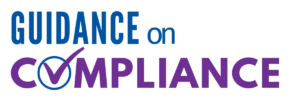With the ever-increasing litigious environment and mandatory Congressional oversight of commercial and government payers, physician supporting documentation should emphasize and include the type of service(s) provided, the time involved, special technology and equipment used, as well as any other complications encountered.
Furthermore, because the government and insurance carriers routinely perform audits as mandated through the Fraud, Waste and Abuse program, it’s important for providers to be aware of problems that could cause them to come under investigation. Below are 10 factors that could trigger an audit of your medical records.
1. Patient Complaints
Payers provide hotline numbers to encourage patients to call if they believe they were billed for a service not received or that they were somehow treated unfairly. Make sure that you provide the first outlet for the patient to ask questions or obtain information and encourage the patient to use it. Respond in a timely manner. Most often you can give the patient a satisfactory answer to their problem or question and they will be happy.
2. Employee and Competitor Tips
Make sure your employees have the data they need to perform their job and an outlet for any complaints. Communication is the key. Be aware of signs that an employee is about to go bad, and keep good personnel records—documenting any breach of policy. Within a group practice, inconsistent coding among partners can trigger an audit.
3. Information from Other Investigators
The DEA, FBI, Board of Medicine, OIG, CMS, and Health Plans Association communicate with each other through a series of reports on investigations that are being conducted. Many times these investigations are coordinated to allow the government payers or large audit investigations to be completed first before the others begin their processes.
4. Data Gathered from Claims Processing
In this age of technology, the use of statistics and data mining are commonplace. The Centers for Medicare and Medicaid’s bell curve has been used for years to identify instances of over-coding (and under-coding) Medicare claims.
5. Abnormal Distribution of Evaluation and Management Codes
Beware of billing all Evaluation and Management visits at the same level. Your practice may be centered on a code of 99213, but you will certainly have claims that don’t quite meet all the E&M standards, or claims where you should document a little more information, or review one more system to meet the next higher level. Be aware of variations from the norm and changes in coding practices. Most often, your practice management system will give you this information to review your practice patterns.
6. Billing Errors
Are there unbilled lab services, minor procedures documented but not reflected on the superbill, or patient visits provided but not charged for? Are certain services repeatedly rejected? Is one payer more problematic than the rest? How well is your staff following up on unpaid claims? To better understand the sources of some of these problems, you’ll need to consult explanations of benefits (EOBs) and any notes related to the patient’s account that have been captured in your billing system.
7. Repetitive Care Protocols
Sometimes high or excessive use of specific CPT codes and certain ICD-10 codes may also trigger audits. Be careful with the use of templates, especially in electronic records. Although templates are acceptable charting methods, they can look very repetitive, especially when it comes to routine care and services. Each chart note should clearly reflect the chief complaint, history, examination and treatment you rendered on that date for that patient.
8. Co-Payment and Deductible Violations
Health insurance providers and out-of-network providers have found themselves under investigation by providing waivers of co-payments, coinsurance, and deductibles to patients treated by out-of-network laboratories and other providers. Commercial insurers continue to seek legal reimbursement actively and recovery and collection claims against providers, alleging in pertinent part False Claims Act (FCA), Anti-Kickback Statute Violations (AKS), and other legal claims. Such efforts are requiring Courts to identify, determine, and evaluate when waivers of co-payments, coinsurance, and deductibles constitute such FCA and AKS violations.
9. Failure to Follow Non-Par Medicare Rules
Nonparticipating providers collect payment directly from the Medicare beneficiary, but are nonetheless limited in the amount that they can charge for Medicare-covered services. Non-participating providers are permitted to bill the beneficiary up to the limiting charge amount, which is 115 percent of the allowed amount for participating providers who are paid 95 percent of the participating provider fee schedule amount. You may not charge Medicare patients more than the Medicare-established rate for any service.
10. Random Audits
The Audit and Inspection Committee occasionally recommends audits of physicians chosen at random. Most random audits have very few material findings (usually none), but random audits serve as a type of control measure against which to compare selective audit results, as well as to identify any inappropriate billing patterns that would not necessarily have been flagged for review under current selection parameters.

